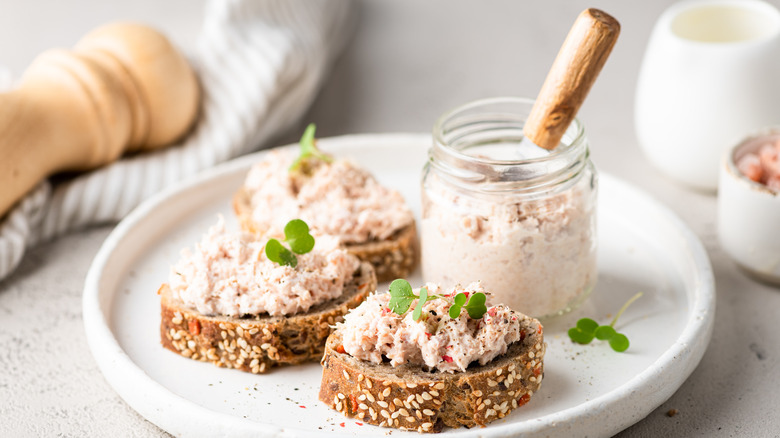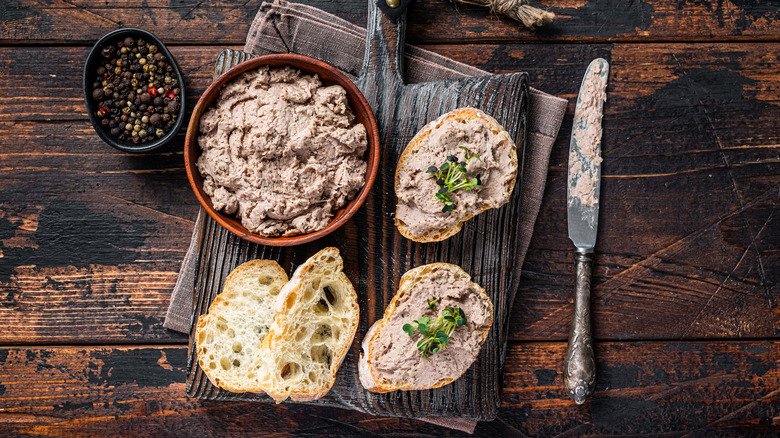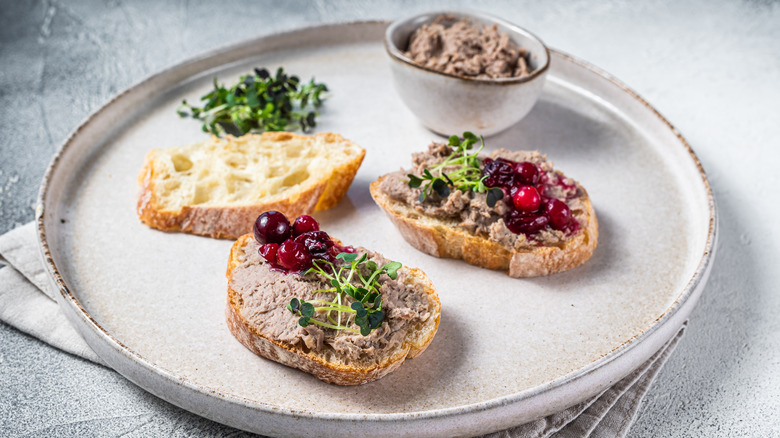How To Turn Leftover Meat Into Mouthwatering Rillettes
We're always looking to keep leftovers from going bad. Sometimes that roast you made, or that rotisserie chicken from the grocery store, might be really good, but after you've had them for five meals in a row, you start wishing you had a dog to throw scraps to. Leftover cooked meat can be hard to get rid of if you make too much, and it can start getting funky in a matter of days. Luckily, there's an easy way to reuse those leftover bits of meat — by turning them into delicious rillettes, also known as potted meat.
Rillettes are often associated with pâté and terrine, and collectively these three groups of meaty snacks are known as forcemeats. Though all are made with meat and fat, they are each unique. Rillettes, which have a chunkier texture than terrine and pâté, are a type of spread made from confited meat, which is usually jarred and topped with a protective coating of fat. Any kind of fish or meat can be used to make rillettes, giving the category a wide range from fishy smoked bluefish rillettes, to citrusy, brandy-infused duck rillettes.
How to make rillettes
To make rillettes, you need to start by confiting your meat. Take your cooked salmon, roast chicken, or whatever meat you have on hand. Heat oil, butter, or animal fat over low heat. Add in whatever aromatics you like, including woody herbs like thyme and rosemary, alliums like shallot or garlic, or lemon or orange zest. Don't skimp on the salt — It's an important part of the preservation process. White wine or brandy can also be added to enhance flavor. Then, shred your meat and add it to the fat and spices, and cook it for a few hours until it is extremely tender. Be careful not to let the fat get hot enough to fry your meat.
Once ready, you can add your tender meat to a mason jar or other container, and top it with a layer of fat. The fat, which protects the meat from bacteria and keeps it moist, acts as a preservative and will keep your rillettes rich and safe to eat for at least a month.
What to eat with rillettes
Rillettes make a great addition to a charcuterie board when you want to expand beyond the classic chorizo, coppa, and prosciutto. They can be served at room temperature, which will allow the fat to melt a little without becoming an oily mess.
Since a lot of flavor goes into cooking rillettes, they are best eaten simply, spread on bread or crackers. Because of their high-fat content, you may want a spicy whole-grain mustard or a bowl of tangy cornichons to cut through the fat. Capers, pickled pearl onions, and other preserved goodies also make excellent accompaniments for rillettes. And since they are often served as part of an apéro, a glass of wine is an obvious match. Consider a mellow, medium-bodied Pinot Noir, or a crisp Sauvignon Blanc. But you could also skip all the fuss and enjoy your rillettes as a late-night, low-maintenance snack with a hunk of good baguette.



